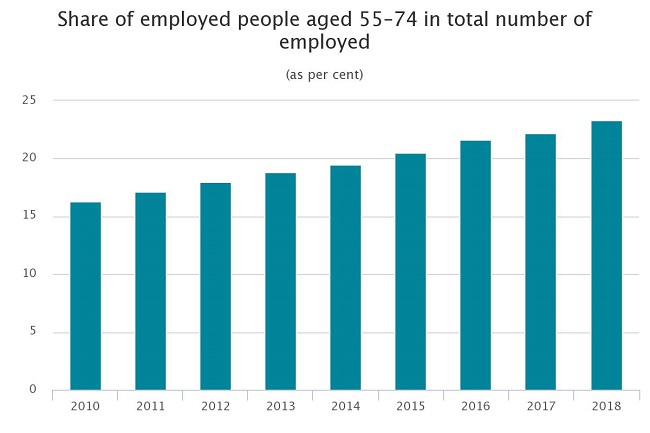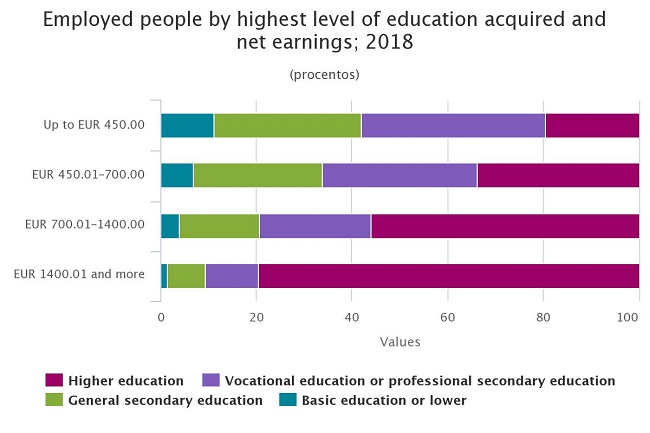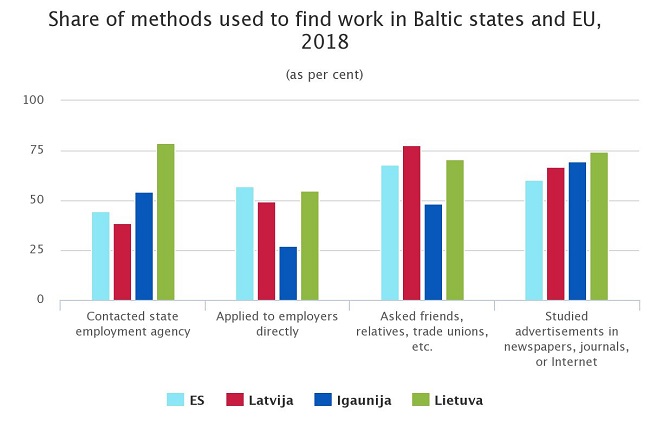Analytics, Demography, Employment, Latvia, Statistics
International Internet Magazine. Baltic States news & analytics
Tuesday, 23.04.2024, 13:58
Each fourth employed person in Latvia is at retirement or pre-retirement age
 Print version
Print version
Females more often tend to work part-time
Out of the employed people, 8.1% worked part-time – one tenth (10.8%) of the employed females and 5.3% of the employed males. Compared to the EU average where one third (32%) of females and one tenth of males (9.7%) worked part-time in 2018, the share of employed population of Latvia working part-time is smaller and tends to reduce. The main reason mentioned behind working part-time was inability to find a full-time job (29.4%).
Managers and professionals have acquired higher education
Majority of the employed population consists of people having higher education (37.3%), while one third (31.6%) of the inactive population (unemployed, those not seeking employment) consists of people having basic education or lower. Results of the survey show that 71.7% of managers and professionals have acquired higher education. Higher educational attainment allows working in higher positions or better salaried jobs. Correlation between educational attainment and earnings is also proven by the survey results – employed having higher education account for more than three fourths (79.5%) of people in the highest wage category (receiving EUR 1400 and more), while in the lowest earnings category (receiving up to EUR 450) only one fifth (19.4%) have acquired higher education.

Asking friends and relatives is the most popular method used to find work
In 2018, 72.8 thousand people in Latvia were unemployed, 41.7% of them were long-term unemployed (were not able to find work for one year or longer). Asking friends and relatives was the most popular method used to find work and was used by more than three fourths (77.7%) of the unemployed people. Compared to other Baltic states, this method is popular only in Latvia. In Lithuania, unemployed more often contacted state employment agency (78.8%), while in Estonia studied advertisements in newspapers, journals, or Internet.









 «The Baltic Course» Is Sold and Stays in Business!
«The Baltic Course» Is Sold and Stays in Business!

